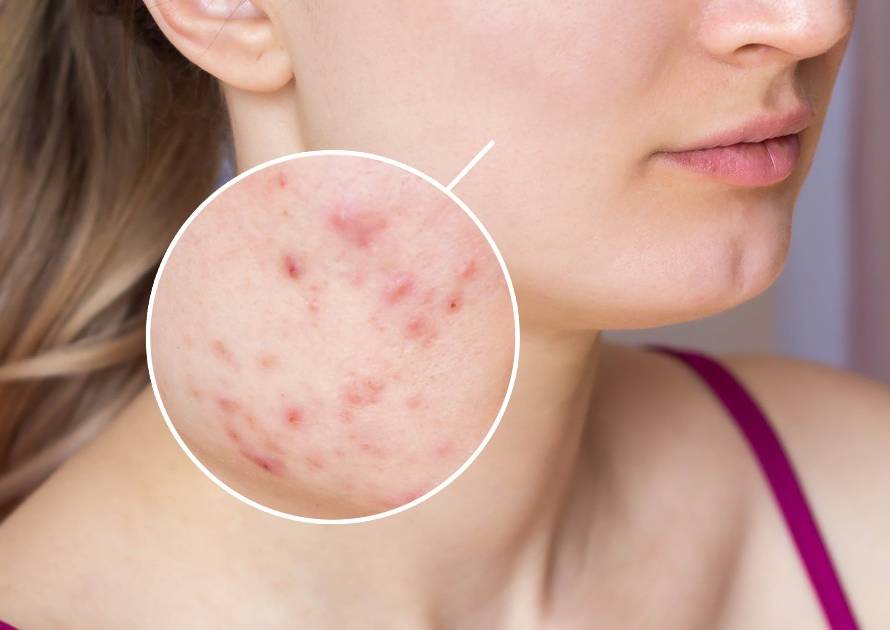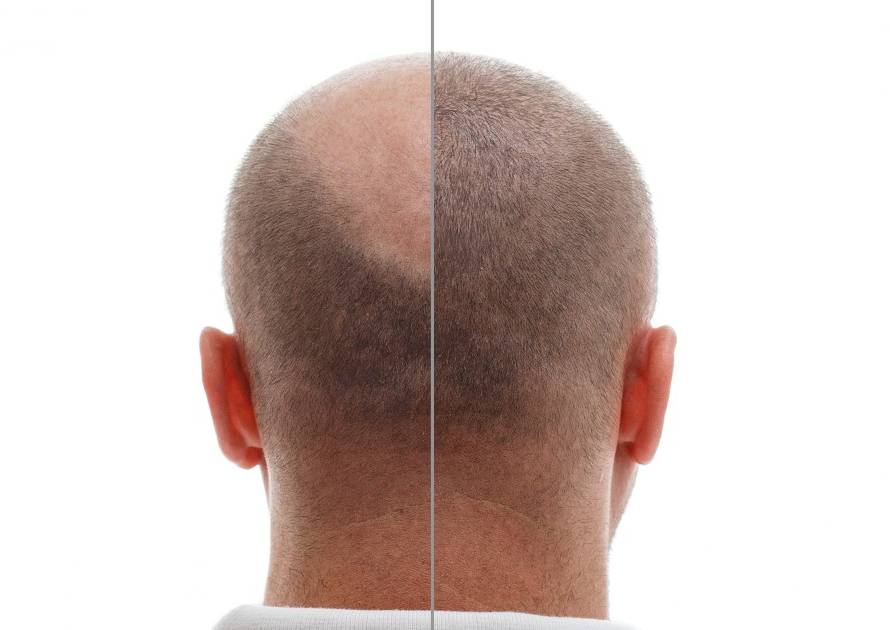Skin tags are small pieces of soft skin that hang off your body and look a bit like warts, and they’re connected to the skin by a small, thin stalk. They’re pretty common, especially as a person ages, asymptomatic, and harmless. People usually get them checked and removed for aesthetic reasons.
Skin tags are usually less than 2mm in size, but they can grow larger with time. They feel soft to the touch and can be smooth and round, wrinkly and even, or might even sometimes look like a grain of rice. Skin tags can be the same color as your flesh or darker sometimes, they appear dark blue.
Naturally, if you happen to notice a new spot or unusual growth on your skin, you should immediately see your doctor confirm what it is. Your doctor would be able to recognize the new growth, and they would advise you to either get it checked for cancer or remove it if it’s harmless.
Skin tags are made initially of collagen, which is a type of protein, and blood vessels surrounded by skin. Usually, these skin tags are found in the folds of the skin. For example, they’re most common in the armpits, groin, thighs, eyelids, neck, or under the breasts.
Places Where It Is More Common for Skin Tags to Appear
New lesions are most likely to develop at sites of friction. The following are the places wherein skin tags could occur:
- Around the neck.
- Underarm.
- Under the breast.
- Eyelids.
- Buttocks.
- Groin.
- Thighs.
Risk Factors for Skin Tags
Skin tags appear to be more common in people with certain medical conditions and family history than those with no issues. Here are the types of conditions that patients who have skin tags could suffer from:
- People who are overweight and obese.
- People with some types of human papillomavirus (HPV).
- People with a sex-steroid imbalance, especially if there are changes in levels of estrogen and progesterone.
- People whose close family members also have skin tags.
- People who have type 2 diabetes.
- Women during pregnancy, possibly due to hormonal changes and high levels of growth factors.
Studies have proven that skin tags are more likely to occur with:
- Obesity
- People with high cholesterol levels
- Hypertension, or high blood pressure
Types of Skin Tags
There are different kinds of skin tags that one can get. The most common ones include traditional skin tags, keratosis, and benign lesions. Here is what you need to know about each type:
Traditional skin tags
This is the most common type of skin tag, and it doesn’t usually require any treatment. They stay small in size and are never typically painful or uncomfortable.
Keratosis
This type of skin condition usually causes bumps to form on your buttocks, cheeks, or upper arms. These bumps appear tough, and when you touch them, they feel dry. Although they don’t usually cause discomfort, they can be unattractive, and the patient might want to remove them for cosmetic reasons.
Benign lesions
Benign skin lesions are lumps or bumps that appear on your skin but are not cancerous. They are common to appear on your arms, legs, stomach, and chest. However, some cases reported that they could occur throughout the body.
Why Skin Tags Occur
Skin tags consist of loose collagen fibers, a type of protein that can be found throughout the body, in addition to blood vessels surrounded by skin. Skin tags are not exclusive to one gender as both men and women can develop them. However, they tend to occur more in older people, obese people, or people who have type 2 diabetes.
Moreover, pregnant women may be more likely to develop skin tags due to changes in their hormone levels. Meanwhile, some people develop them for no apparent reason.
Skin tags can be triggered by recurrent friction, so they tend to grow in the skin folds, where the skin rubs against itself, such as on the neck, armpits, eyelids, or groin. Hence, skin tags tend to affect overweight people who have excess skin folds and skin chafing.
When Can Skin Tags Be a Problem?
Skin tags are known to be harmless benign and do not usually cause pain or discomfort. However, some people may consider having skin tags removed if they’re not okay with the way their skin tags affect their appearance and hence self-esteem. Sometimes, they snag on clothing or jewelry and bleed, which could be pretty annoying.
Skin tag removal is considered cosmetic surgery, so it could cost you a little money to remove them. Sometimes, skin tags fall off on their own if the tissue has twisted and died from a lack of blood supply.
Problems that Skin Tags Could Cause
As we mentioned earlier, skin tags are typically harmless and unproblematic. However, sometimes, complications occur due to external or internal factors. Here are some of the most common complications that can possibly happen:
- It can get injured if there is too much friction with clothes or jewelry.
- It can get infected. You can tell if your skin tag is infected if you feel sudden onset pain, swelling, or change in color.
- It’s usually associated with insulin resistance (diabetes and obesity): When you visit the dermatologist to check on your skin tag, you would be asked by the doctor to do diabetes screening. This is because many patients get accidentally diagnosed with diabetes when they come to the clinic for a skin tag checkup. It is also more possible to be related to insulin resistance if the patient’s family history has diabetes or obesity.
Treatment of Skin Tags
As mentioned earlier, skin tags are usually harmless, so their removal is generally for aesthetic or cosmetic reasons. Usually, larger skin tags, especially in areas where they may rub against something, such as clothing, jewelry, or skin, may be removed due to irritation.
Here are the different ways your dermatologist can treat your skin tags:
Surgery
The following procedures are considered minor surgery and could be used to treat your skin tags:
- Cauterization: The skin tag is burned off using electrolysis.
- Excision: The skin tag is cut out with a scalpel. This is the most common type of skin tag removal.
- Cryosurgery: The skin tag is frozen off using a liquid nitrogen probe.
- Ligation: The blood supply to the skin tag is interrupted.
Here is how the procedure might go at the doctor’s office:
- The doctor will start off by cleaning the area.
- After that, he or she will apply local anesthesia.
- The doctor will then proceed to snip the skin tags by using a surgical scalpel or electrocautery.
- Then, he or she will try to control the bleeding.
- Finally, the patient is advised to take care of the wound until it is fully healed.
Note: Make sure that procedures are only done by a dermatologist, specialist skin doctor, or a similarly trained medical professional. Skin tags on the eyelid may have to be removed by an ophthalmologist or specialist eye doctor.
Warning!
Do NOT try to remove a skin tag at home. This is highly frowned upon by specialists because you could put yourself at risk of bleeding and possible infection of the affected area.
However, tiny tags can be removed by tying dental floss or thin cotton thread around the base of the skin tag to cut off circulation to the skin tag. However, it is better if you get it checked by a specialist doctor as it can be cancerous, and only your doctor would know if it’s benign or not.
Over-the-counter solutions
Over-the-counter solutions are available at pharmacies. These solutions work to freeze the skin tag so that it will fall off after 7 to 10 days. These could also be purchased online, although it is recommended that professional medical advice from a dermatologist is sought before using these treatments. These medications are usually similar to those used for wart removal.
A myth says removing skin tags encourages more of them to develop. However, no scientific evidence exists to prove this myth.
Final Words
Skin tags are the small piece of soft skin that hangs off your body and look a bit like warts, and they’re connected to the skin by a small, thin stalk. They’re pretty common, especially as a person ages, asymptomatic, and harmless. People usually get them checked and removed for aesthetic reasons.
If you have recently developed a skin tag, and it has been bothering you or causing you embarrassment, then you need to get it checked by a dermatologist as soon as possible. Do NOT try to fiddle with it or remove it at home, as it could lead to bleeding and infection of the affected area.
When you see a doctor, you will be asked to do a diabetes test to make sure that you don’t have any. After that, your doctor will let you know the best way to remove the skin tag. The procedure does not take more than 15 minutes to complete.



